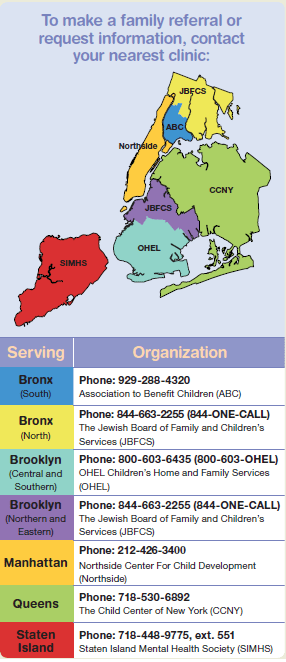
The Future of Youth and Mental Health : An Expert Weighs In
When the COVID-19 vaccine was approved for children as young as six months old, many parents were relieved, grateful for the additional tool to keep their kids safe and healthy. But as the pandemic has raged on throughout the last two years, youth mental health issues have been revealed and exacerbated at staggering rates, making safety and health even more difficult for families to find. In December of 2021, the U.S. Surgeon General, Dr. Vivek Murthy, issued an advisory on the impacts of the pandemic on young people’s wellbeing. The key takeaway was that although the pandemic exposed mental health issues in many children, these issues existed before March of 2020 for the kids most vulnerable to them.
New York Family sat down with Melissa Galvin (she/they), a graduate of New York University’s master’s program in Mental Health Counseling, to talk about the challenges kids are facing today and how families can help. Melissa has eight years of experience working in the mental health field and primarily supports LGBTQ youth.
“Existential dread is not a strictly adult problem anymore,” says Melissa, explaining the major difference between this generation and previous one’s mental health challenges. With increased access to information about world events and news, children are exposed to complex issues before they have the skills to process them. Compared to adults, Melissa says, existential dread in children is even more debilitating because in addition to not being able to comprehend how they feel, children “don’t even know how to get to adulthood, or if they want to get there, or what it looks like.” With the seemingly constant bad news of the pandemic, children faced this existential dread all the time. Melissa gives another example, noting that with the recent overturning of Roe v. Wade by the Supreme Court, children might not fully understand what’s going on, they know the adults around them are scared, and they are scared as a result. “There’s no such thing as ‘not a kid issue’ anymore,” Melissa warns. “When children have more advanced technological literacy than their parents, there’s no way to have the hard conversations once the kids are in bed, the way our parents did.”
Have those conversations
Melissa believes the greatest antidote to children’s existential dread is having developmentally appropriate conversations with parents and other adult caregivers. Parents should assume that children have access to current events and be open to discussing these issues with them, lest their children fill in the blanks with information they find online that might be more traumatic than they are able to handle. If children are asking questions about a topic, Melissa says, then they are thinking about it and will need guidance from adults about how to process what they’re hearing in a healthy way. Adults should use their best judgment on what level of detail is developmentally appropriate for their children, but there are resources available to help guide these conversations. Searching online for how to talk to kids about a particular topic can be helpful, Melissa says, but so can letting your child lead the conversation and staying in tune to what they’re curious about. For ongoing conversations, such as raising a child who is part of the LGBTQ community, parents can look for reputable organizations that focus on how to support children with various identities. It’s okay to make mistakes during these conversations, because what’s most important is opening the avenue of communication with children. Ultimately, Melissa says, “It’s naïve to believe we can protect children from the atrocities in the world.” Parents instead have to provide the tools to cope.
Of course, conversations are only a first step, and parents should be aware of the difference between typical, everyday struggles with mood, emotion, or behavior versus more serious mental health conditions. This can be difficult to determine at times, but Melissa provided some insight for parents and caregivers. “Zoom out and get context is my number one piece of advice,” they said. Adults should note if the child is feeling or acting a certain way only in particular environments or regardless of environment. Are the behaviors or negative emotions only happening at school, or in particular classes at school, and not at home? If so, that might be a sign that some external factor is disturbing the child, such as the particular teaching style in one class, or a bully sitting next to them in school. On the other hand, if the child is struggling in all environments, even when there seem to be no external triggers, there might be a more clinical mental health condition that needs to be addressed.
Let go of old ideals
There is not one singular model of how a child “should” act, though, Melissa emphasizes. Many traditional ideals for children have racist and misogynistic roots that clash especially with neurodivergent children today. “There’s a difference between causing a distraction in class and being violent in class,” Melissa says. The former might indicate that the individual child requires an accommodation to excel, while the latter might be a sign of a mental health struggle requiring a higher level of support. Melissa works primarily with children in the LGBTQ community, and she finds that we need more research on queer-affirming care to better support our children. “Traditional models of behavior and mood are modeled after white, affluent kids,” Melissa says. Those models might not work for kids of color, or working class kids, or queer kids, and that’s an issue with the model we’ve come to expect and enforce, not the individual children.
Melissa insists parents, teachers, and other caregivers should remember that children often understand more than we expect them to, especially with their increased access to information, and especially if we aren’t an immediate family member of the child. “We are not always the experts in the room,” Melissa says. “Children have often lived through the challenges we’re discussing, and we can listen to them, too.” Institutionally, Melissa believes we need more resources for children to be heard. “Folks who are not in immediate crisis but need more than weekly therapy need help,” they explained. “The system is set up to have very limited outpatient care or extremely intense inpatient care and there’s not enough in between. Hospitals are often under-resourced and act as Band-Aids for long-term fixes. Issues like chronic suicidality need outpatient care—more than weekly therapy, but not a hospital stay.”
Educate yourself on how to support your children
When it comes to talking about suicide, Melissa encourages caregivers to dispel the misinformation and myths many of us have been taught. For example, many fear that talking about suicide will inspire someone to think about suicide for the first time. “A common myth is that if you talk about it, you increase their likelihood of doing it,” but Melissa says research has proven the opposite repeatedly. Parents can read up about how to support a loved one through suicidal ideation, then can create an open dialogue with children that allows them to feel safe sharing their thoughts about it if they need to.
Ultimately, the greatest source of support a parent can provide for their child is unconditional love in a safe environment, Melissa says. This means being mindful of the things we say around our children, as well. Children listen when we make disparaging remarks about a friend or stranger’s mental health struggles, and through those remarks, we communicate that our children cannot feel comfortable talking to us about their mental health issues, which can have dangerous consequences. “No matter how bad school or the world is,” Melissa says, “coming home to a loving, safe, supportive home ensures at least one safe space.”
Helpful resources for children and families:
- The National Alliance on Mental Illness (NAMI) lists extensive information, resources, and treatment options for kids, teens and young adults.
- For information about suicide prevention and supporting LGBTQ youth, visit The Trevor Project.
- To search for a therapist in NYC and elsewhere, Zencare makes it easy to filter by insurance, age, concerns, and more.
- To text, call, or chat for help with your own or a loved one’s mental health, visit NYC Well. They also list a wide variety of mental health resources for NYC families.
- NYC.gov also provides an index of local services.
- The NYC Mayor’s office provides a guide for youth mental health resources.
- Psychiatry at Columbia University publishes a list of local and national mental health resources.
- The U.S. Surgeon General’s Advisory on protecting youth mental health describes actions that folks at every level can take.























